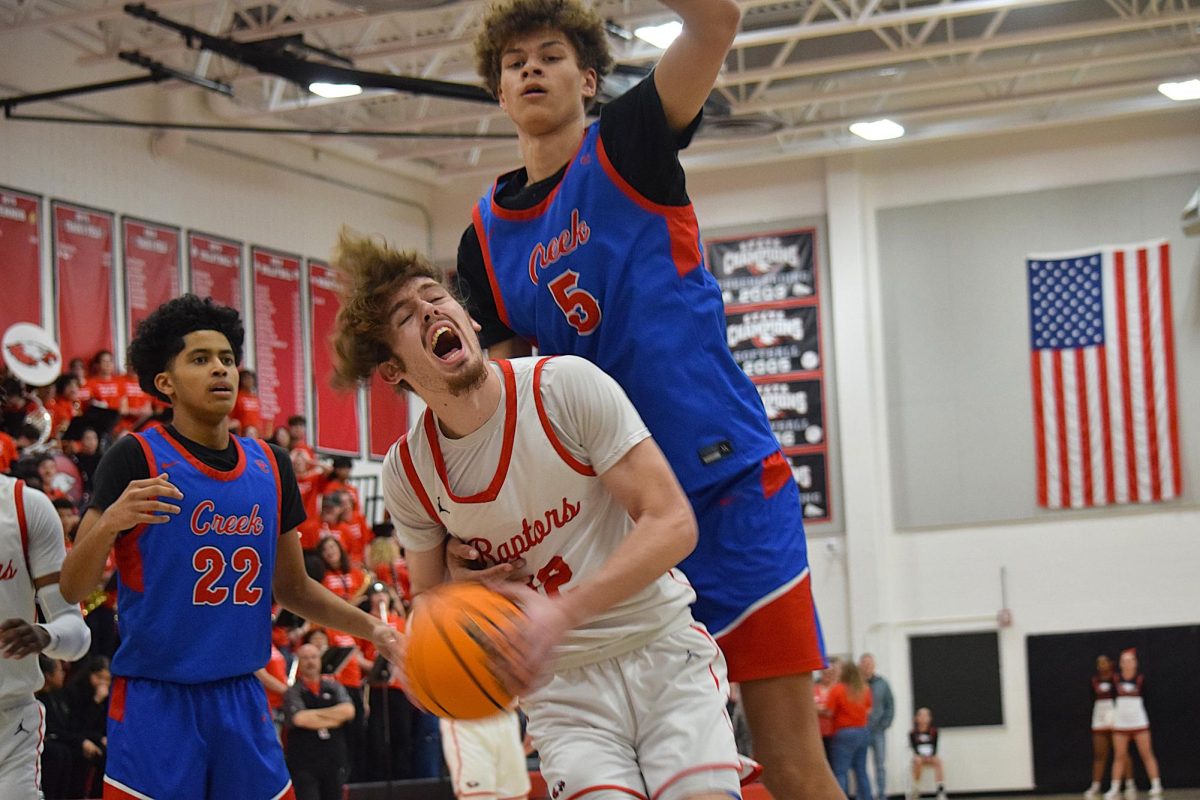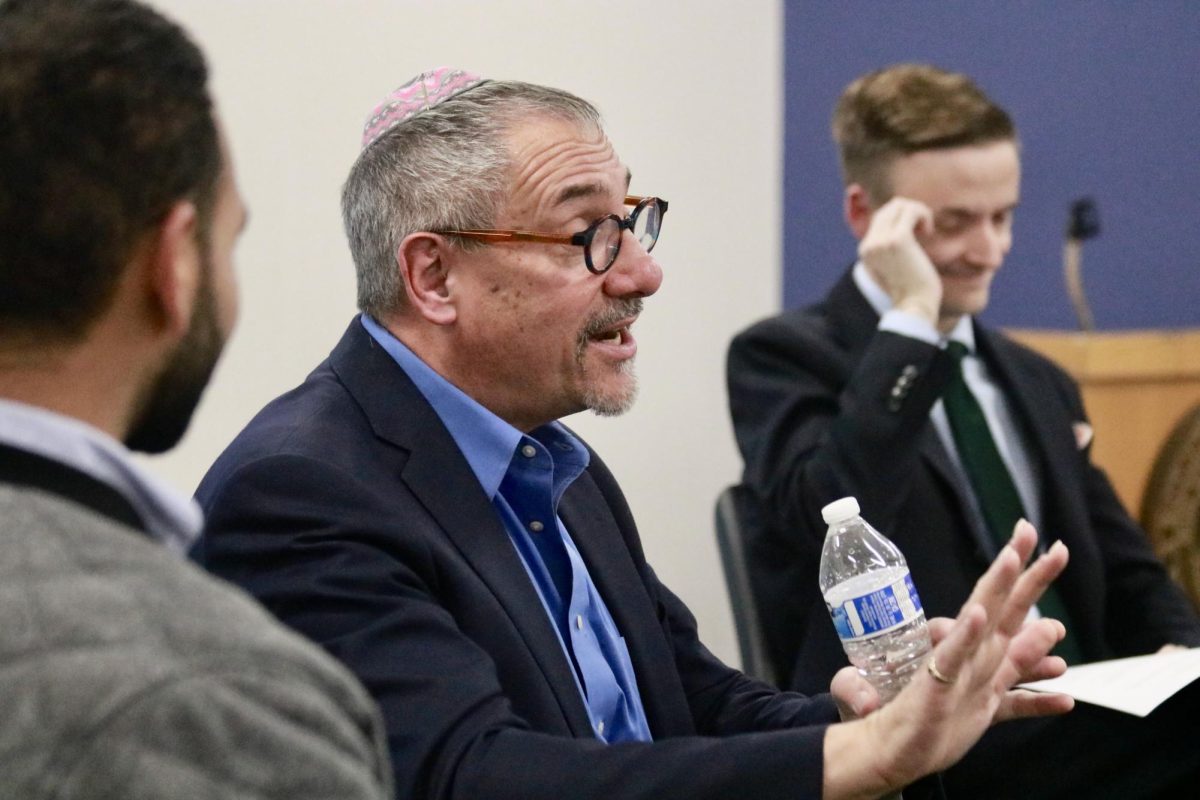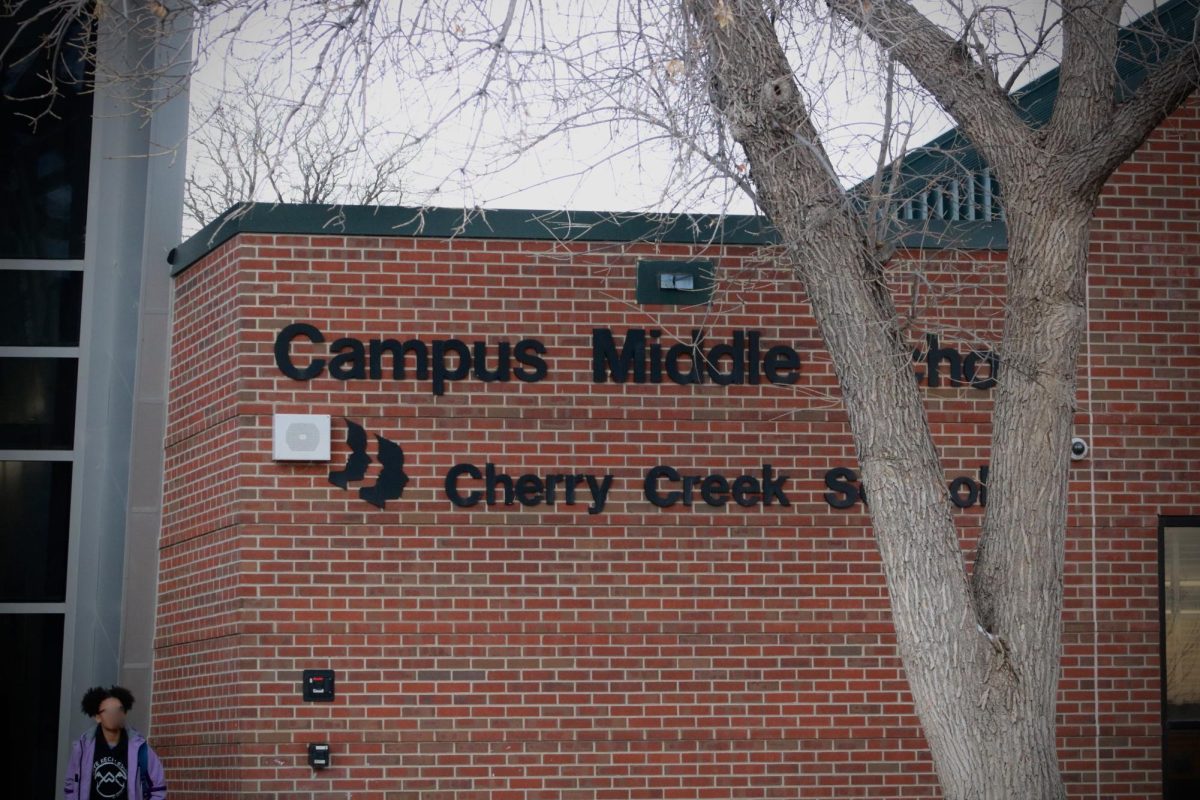How Title IX Is Failing Sexual Assault Cases
May 18, 2022
In November 2021, a Grandview High School student reported to administrators that she had been sexually assaulted by a male student in one of her classes. Five months later, very little had been done about it.
Many Creek students heard about the incident when it blew up on social media. In a call for action, high schoolers across the district organized walkouts and protests. On April 20, Grandview students walked out onto their football field in protest, and that Friday, Creek students wore Grandview colors and blue ribbons in solidarity with the original student. It quickly escalated into a national story.
Grandview and CCSD claim that they have done and will continue to do as much as they can in accordance with Title IX. It seems that the school has been dragging their feet on taking meaningful action, but how exactly does Title IX factor into that? As it turns out, the 1972 legislation, which has faced heavy modification since it was passed, has become an obstacle for both schools and victims to seek justice after assault.
What is Title IX? Title IX was passed in 1972 to amend the Civil Rights Act (CRA) of 1964. Created to apply the legislation contained in the CRA to schools and higher education, much of the historical importance of Title IX has been in its application to school-sponsored sports. However, according to the National Sexual Violence Resource Center (NSVRC), Title IX also “applies to all forms of sexual harassment and assault, domestic violence, dating violence, and stalking.” So when handing down discipline in the event of sexual harassment, schools must follow Title IX guidelines.
Title IX is vital to protecting not only girls and women, but also students who identify as part of the LGBTQ+ community. But under the Trump administration and Secretary of Education Besty DeVos, some of the protections for these students were gutted or eliminated entirely. DeVos’s changes also altered how schools can handle cases of sexual assault, by amending the text to give more rights to the accused. One prominent piece of this is how incidents of sexual harassment and assault are reported and dealt with at the school level.
In the past, some have argued that Title IX does not give enough rights to those accused of sexual violence. So DeVos’s resolutions included supposed solutions to that problem. Many of these resolutions slow the process of reporting sexual violence and allocating appropriate discipline, and others make the process humiliating for alleged victims. Among the prominent amendments were policies that slowed the reporting process or made it more public than before.
What’s wrong with Title IX? Here are a few policies under the current law that are problematic.
- If the accuser has filed multiple sexual assault claims in the past, that can be used against them as an ‘example of consent.’
- The school board has the final say in whether the accused will be removed from school and offered alternate plans based on if they think the accused’s presence is “detrimental” to the safety of others.
- In contrast to previous policies under the Obama administration, the accused now cannot be assumed guilty, which prevents any discipline facing them until there is a verdict agreed upon.
- Cases covering sexual assault will now be heard in a more public setting such as a courtroom with cross examinations whereas previously the highly sensitive cases would be heard behind-the-scenes.
- In lieu of DeVos’s recent changes to Title IX in May of 2020, victims of sexual assault will now have to navigate a more complicated reporting system, and the accused have a chance to challenge the accuser’s allegations.
What needs to change and how can we change it? Before the alterations under the Trump administration, Title IX provided support for students struggling with sexual harasment. After DeVos’s changes, much of Title IX moved to support the accused, instead of the accuser. A reversal of DeVos’s changes would eliminate the obstacles that schools and students now face.
Under the Biden administration, the Department of Education is currently rewriting many Trump-era changes to Title IX and adding other protections. Some of these give more protections to LGBTQ+ students in classrooms or trans kids in sports. But much of the harmful rules concerning sexual assault still stand.
As a Brown Daily Herald article pointed out last month, the cross-examination process created by DeVos and the Trump administration actually do far more harm than good, and can result in a traumatic or useless reporting process. These rules were created to protect the accused, but Title IX needs to protect victims.
So how can students affect this change? As we wait for the Biden administration to unveil further changes to Title IX, students can support organizations that advocate for rights in education under Title IX. One such organization is Know Your IX (KYIX), which not only advocates for change to Title IX at the local and state level, but also provides resources to students who are slogging through Title IX processes at their schools and has been outspoken against DeVos’s changes to Title IX. Besides donating, students can also organize or join local chapters of KYIX. And supporting organizations like this is especially important as the Department of Education announces its changes to Title IX in the coming months.
Perhaps most important, however, is supporting and advocating for victims in your community. The solidarity and awareness shown for the student at Grandview are a great example of what can be done to protest mishandled incidents of sexual assault in your community. Continuing to push for change to Title IX, regardless of how you do it, will make an impact, no matter the size.
This story was a finalist for Best Staff Editorial for NSPA.




















